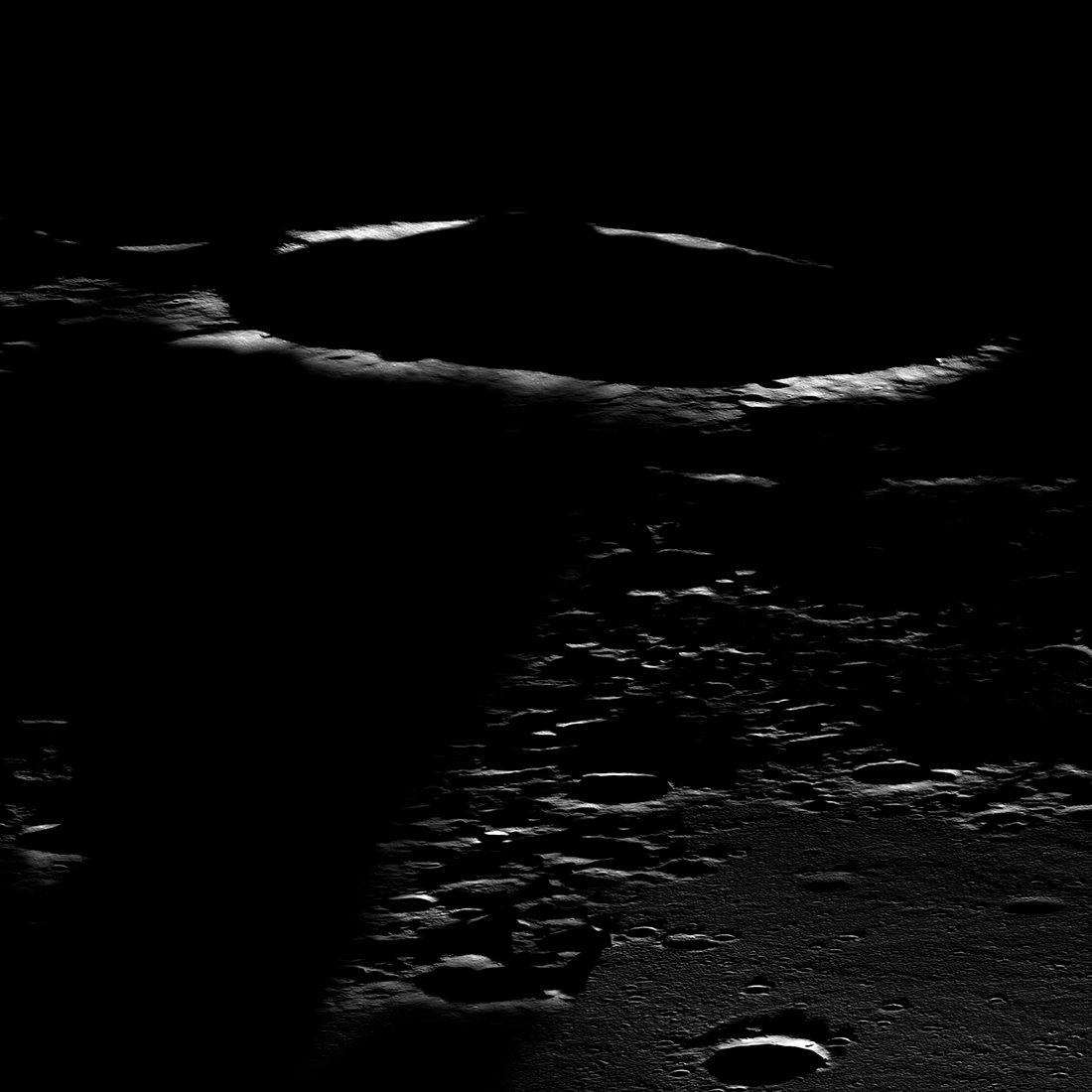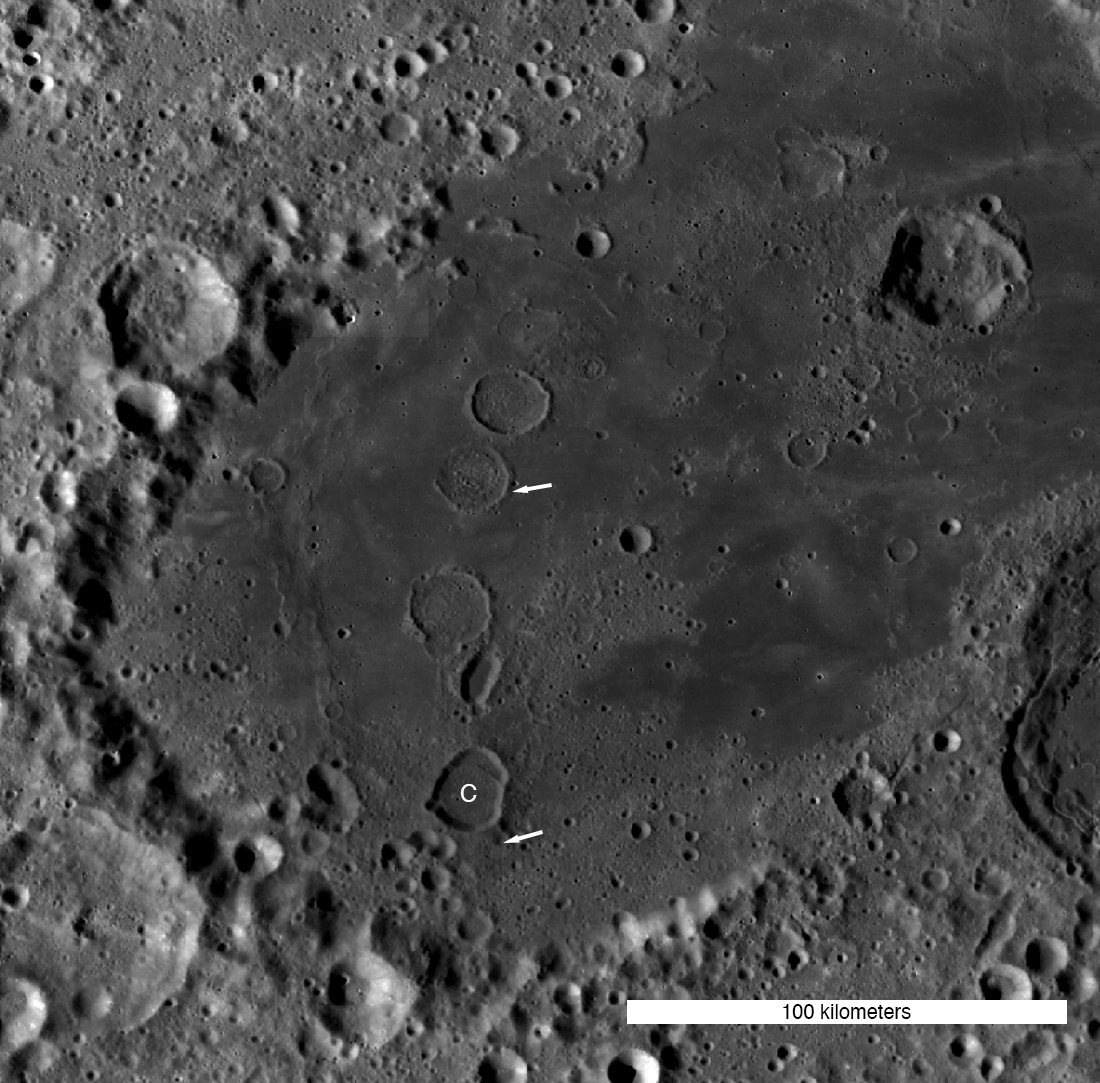The presented image was taken by the LRO probe. It shows the border between light and darkness that stretches across the surface of the moon, also called a terminator.

Terminator line imaging has long been used by space agencies to better understand the topography of celestial bodies. When the Sun is near the horizon, even the smallest height becomes a source of long shadows. Astronomers can refine topographic maps by analyzing images taken under such lighting conditions. In addition, such images are very atmospheric.
Pictured in the LRO image, the surface area is located in the western part of the Moscow Sea — one of the very few seas on the far side of the moon. The illuminated swell in the background belongs to an unnamed impact crater with a diameter of 21 km. At the time of filming, the LRO was at an altitude of 94 km above the lunar surface.
The mission also published a contextual image that gives a more detailed picture of the area photographed by the probe. Arrows mark the beginning and end of the captured LRO area, while the letter indicates a 21-kilometer crater.

It should be noted that the far side of the moon is very different from the visible. It has few seas and many large craters. According to planetologists, this asymmetry is due to the consequences of a powerful collision experienced by our satellite at the dawn of the solar system.
According to https://www.lroc.asu.edu
